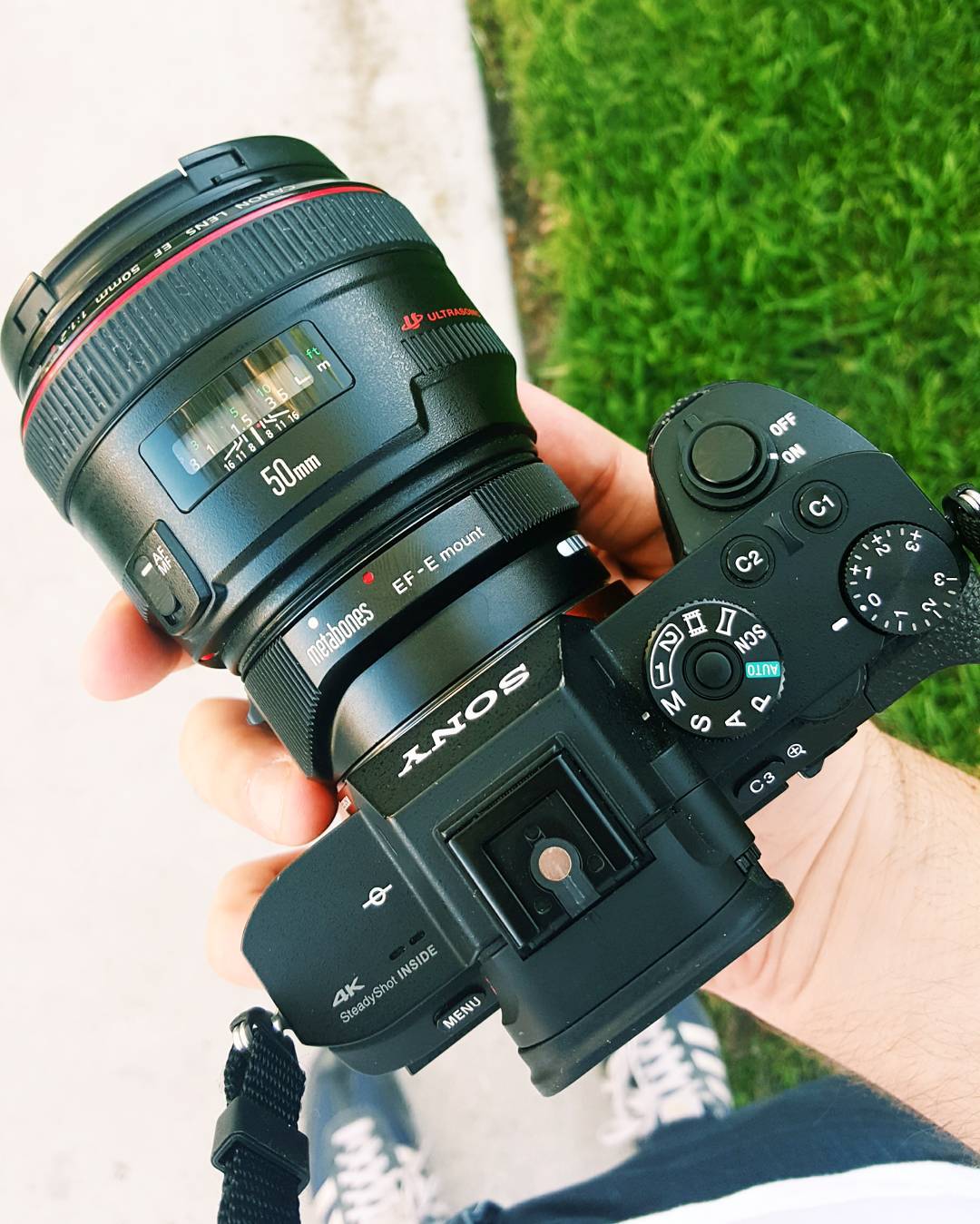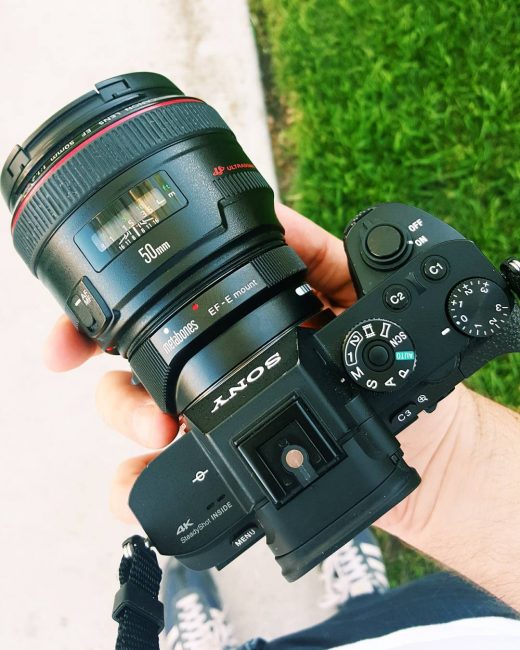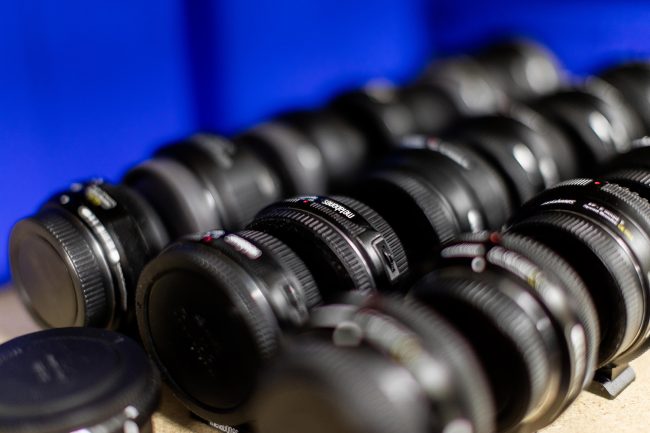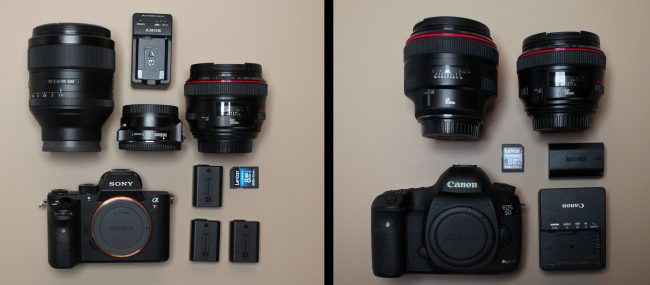Equipment
Things to Know When Transitioning to Sony Mirrorless Camera Systems

There is no doubt that Sony has made some massive changes over the last few years in the photography industry. What was once a brand that many laughed at, has now become the leading sensor manufacturer and most exciting camera manufacturer in the digital era. So I wanted to take a moment and give you some advice and tips on how to painlessly transition from Canon or Nikon to Sony.

I’ll start by saying that I haven’t made this change personally, but have been considering it for the better part of the year. My research comes from a number of rentals of the Sony a7rII system, and talking endlessly to those who have switched. You’ve certainly seen an article or two denouncing Sony systems, for those accustomed to the DSLR format, but there is a huge number of reasons to make the switch. So here are a few things I’ve learned about the Sony system that will help with your transition.
Growth – At A Massive Rate
Perhaps the biggest challenge of making the switch to something like the Sony a7rII or Sony a6500 is understanding the growth of Sony. They’re pushing out more new lenses, and more new products faster than anyone, which can make the shopping process a bit confusing. This year alone, Sony has released eight new lenses to their E-mount/FE mount platform (and two teleconverters), significantly more than Canon with their EF mount at three this year (two of which were version upgrades to lenses already developed).
But all this still requires patience. Canon has been using the EF mount system since 1987, and Nikon has had their lens mount since the late 50s. So while Sony is making a lot of lenses quickly, they have 30-60 years of catching up to do.
Segmentation in the System
The first thing you’ll notice when diving into the research about mirrorless systems from Sony is that they’re segmented with their lens lineup. A-mount, E-mount, FE-mount, how can you tell which one is best for you? The answer is FE mount. E-mount is the format that Sony has chosen for their crop sensor alpha series (confusing, I know), and the FE mount correlates to the full frame sensor cameras. While you can use the E-mount lenses on the a7 series of cameras, the camera will auto crop the sensor to APS-C format to avoid any vignetting caused by the lens designed for the crop sensor. Both of these lens mounts work on the Sony a7s/a7R lines of cameras, though it’s probably best to stick with FE lenses, where 99% of Sony’s research and development is going.
The second thing you’ll notice is that its hot shoe and many of the design elements are different than what’s on a traditional DSLR or camera. This means you’re not going to necessarily be able to put that old flash trigger on the camera and expect it to fire. But new flash triggers will have their problems as well. This becomes most obviously true with the Profoto TLL triggers, which allow for HSS and TTL on their Profoto B1‘s and Profoto B2 strobes. However, Profoto has announced the TTL-S remote, bringing those functionalities to the Sony platform soon. Additionally, anything using a center pin can be expected to work, so all PocketWizards and other common flash units will still work, at least in manual mode.
Third Party Acknowledgement
Another important thing of noting is that third parties are finally happening, though it’s not as fast as many are hoping. For one, Sigma has finally acknowledged Sony as a contender and has started developing an adapter for their Art series lenses – though still no word on when an E-mount Art series line will be released (note, they do have Art series lenses for Sony A-mount, but nothing for E-mount…yet).

Adapting Isn’t The Best Answer
The solution to the limited, but growing, lens lineup is just to use an adapter, but that isn’t exactly the best answer. The Metabones lens adapter systems are great for many, but we’ve personally had problems with them in the past, which is why I do not recommend them for professional use. While the Sigma MC-11 adapter seems to be more reliable through our studies, it is designed to be limited to Sigma lenses exclusively. The reality is that you can delay the transition of switching your glass out for Sony glass, but it’s not advised to prolong it. The world of shooting Sony camera bodies while using Canon glass isn’t exactly ideal.
You’re Not Saving Space

A Sony a7rII with a Metabones Adapter, Canon 50mm f/1.2L, and Sony 85mm G Series verse a Canon equivalent.
One of the biggest misconceptions with mirrorless systems is that you’re going to save space in your camera bag. If you’re just carrying around a camera with a lens attached, sure…but if you’re like me and usually bring a variety of lenses and tools, you’ll find that the Sony systems don’t save space – as the lenses are often larger, and the battery life is a real issue. If we’re honest, you’ll likely get ~260 shots from a single battery using the Sony A7r II, 3.5 times less than what you can expect with a Canon 5d Mark IV or similar. So with batteries taking up that saved space in your bag, we have to look at the cameras on equal playing fields. Which brings me to my next point –
The Future is Awesome
The number one reason for you to consider switching to Sony is that it’s primarily from the future. The tech within the systems is so incredibly far ahead of Canon and Nikon, giving you more power to do what you love. For one, the digital viewfinder feels cutting edge, giving you exposure and depth of field in (virtually) real time. For those who grew up on DSLRs, and especially those who started on film, this feels like cheating. Quite simply, that battery draining viewfinder will, without question, make photography easier for everyone who uses it. Additionally, something like the Sony a7R II has wifi, 399 focus points, 4K video capabilities, 5-axis internal image stabilization, and a beautifully crafted full frame 42mp sensor. Virtually everything you would need, and didn’t know you wanted is available in a mirrorless system, making your bulk DSLR feel like a relic from another, much older era in comparison.

And that is the biggest reason to switch. Over the years, Nikon and Canon have left many frustrated. They haven’t innovated enough, and many feel that the DSLRs released in 2008 can still hold up to today’s DSLR cameras. But our plea’s for wifi, for GPS functionality, and for intelligent autofocus systems has been answered, but as many have found out, they’re being solved by Fuji and Sony systems.
But The Answer Isn’t Always Yes
There is some bad with the good, though, and Sony isn’t all blue skies and rose bushes. The harsh reality that many people have had with the Sony systems comes from their full understanding of the bad. The mirrorless system in the Sony lineup isn’t a DSLR killer, or not yet at least.
For one, the Sony is a bit slower than a DSLR, which could have massive effects on sports photography, or other time sensitive aspects of photography. I’m not talking frames per second, but rather the time the photo takes from pressing the shutter, to the camera responding. The reality is that it’s microseconds in time, but the short delay from the digital viewfinder to your hand, to the shutter activating, can add up – and help you miss the shot. Even still, I often write this off as a learning curve problem, but it’s hard to go back when we have grown so used to real time.
Secondly, I wouldn’t exactly call the Sony a7RII weather sealed, and ready for action. Having said that, I’ve never had, or heard of them failing under extreme conditions – but I believe that’s because people might be sensible enough not to put them through the reigns like you might with a Canon 1DX Mark II or Nikon D5. With it’s smaller form factor and tech design, it’s easy to assume that it’s more likely to break. Canon and Nikon are still on a mechanical platform, where Sony has taken the digital approach, meaning more pieces of hardware can fail.
So is it time to switch? Well, I’m not sure. But with Sony’s recent lens updates and the technology that they already have in place, it goes without saying that there is no better time to switch than right now. The hurdles to the system have all shrunk in size, and being less and less frequent, making the mirrorless systems by both Sony and Fuji completely capable cameras to use for professional work. With Nikon and Canon seemingly ignoring our cries, maybe this is the time to show them that other options are available.
Author: Zach Sutton
I’m Zach and I’m the editor and a frequent writer here at Lensrentals.com. I’m also a commercial beauty photographer in Los Angeles, CA, and offer educational workshops on photography and lighting all over North America.
